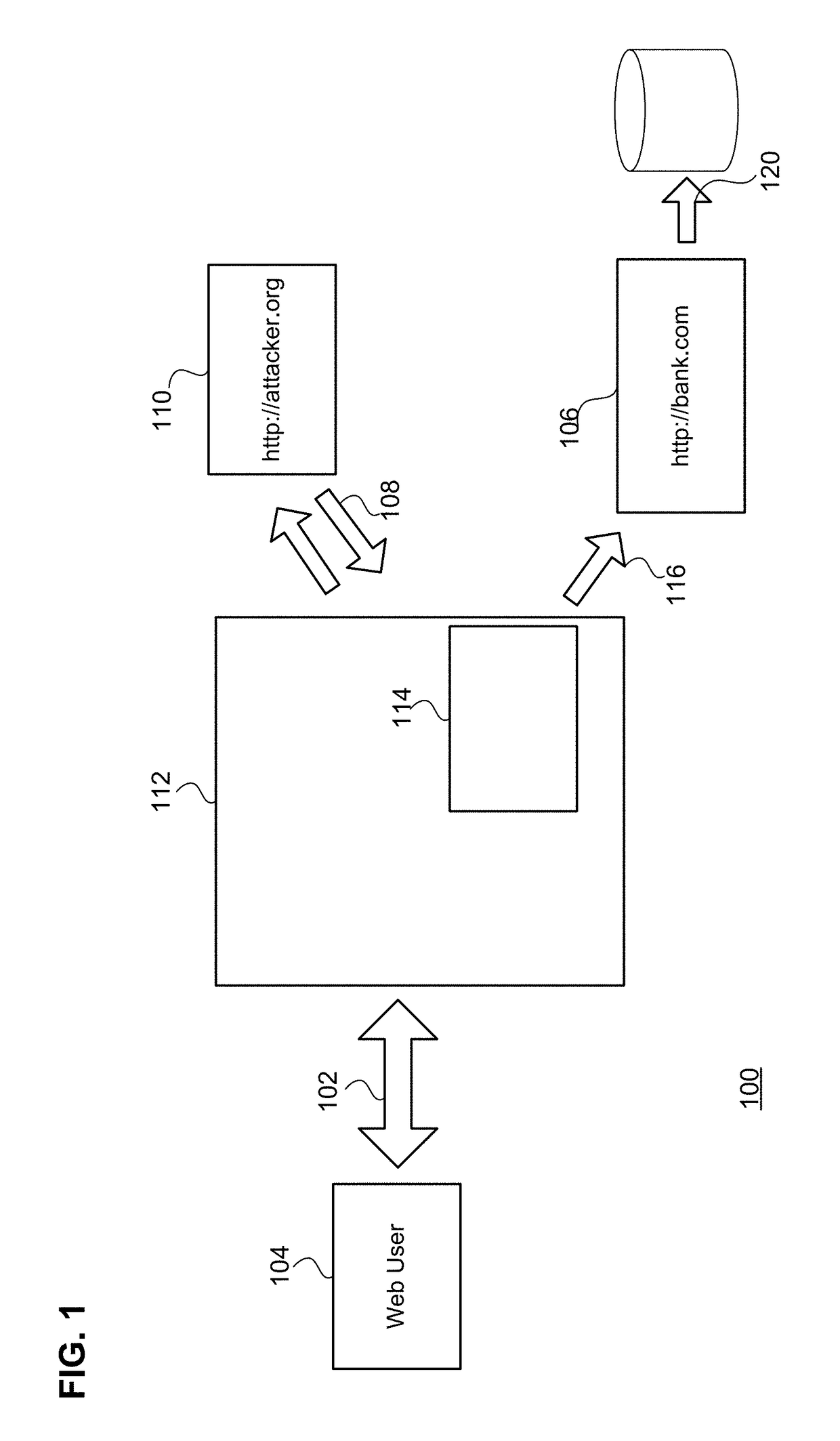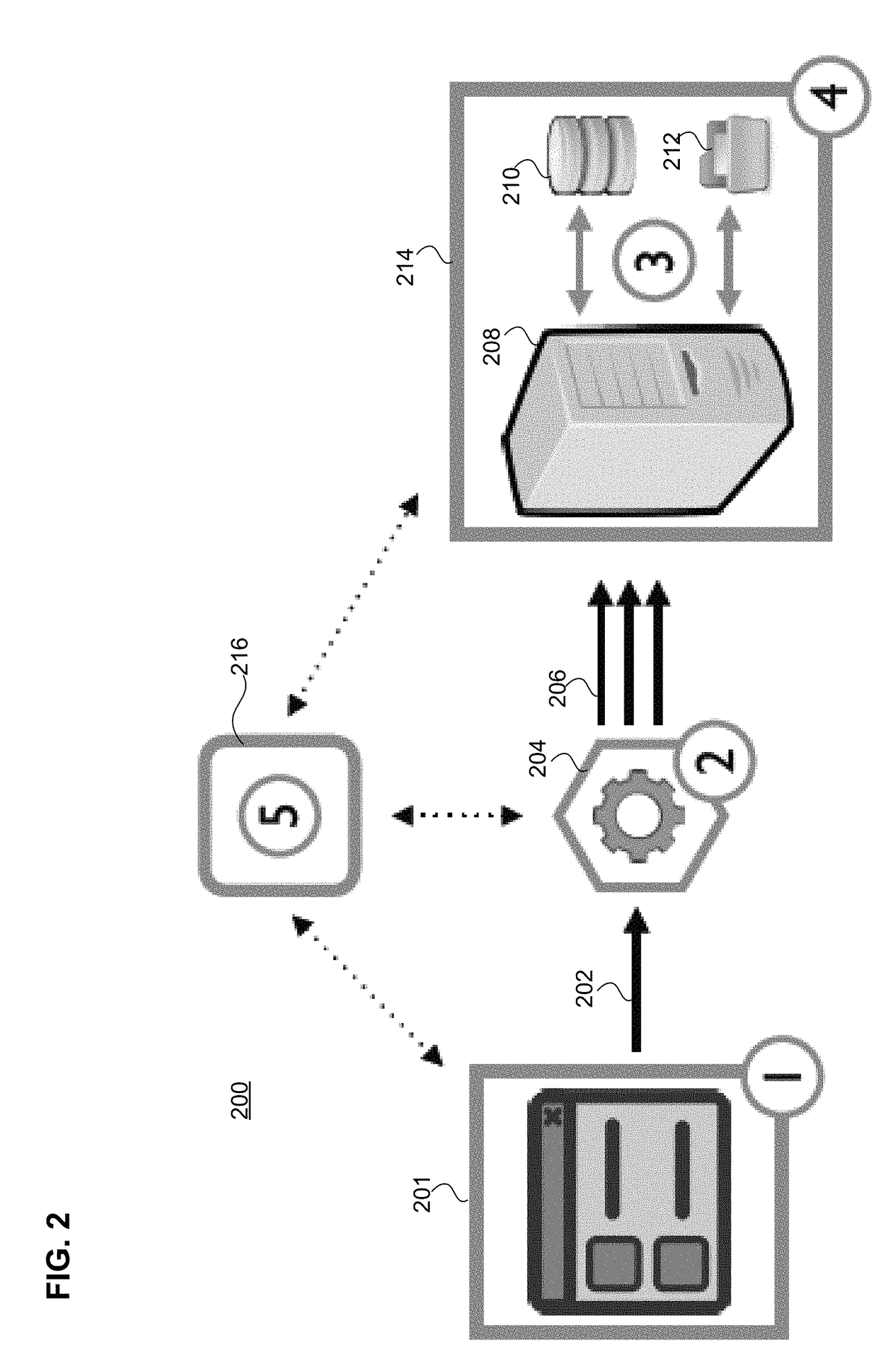Cross-site request forgery (CSRF) vulnerability detection
- Summary
- Abstract
- Description
- Claims
- Application Information
AI Technical Summary
Benefits of technology
Problems solved by technology
Method used
Image
Examples
example
[0112]Particular examples are now presented in connection with FIGS. 3-8. In particular, work flow recording is now discussed.
[0113]As mentioned previously, a challenge in dynamic security testing of web applications is to reach application functionality that is only accessible if specific work flow constraints have been fulfilled.
[0114]A simple example for such an circumstance is a three step work flow (e.g, “enter order”, “enter shipment details”, “confirm order”), partitioned in three separate web documents, each hosting the GUI for the respective work flow step. The subsequent web document is only available if the previous interface has been interacted with correctly.
[0115]Randomized application interaction (as done by, e.g, web crawlers) will not reliably reach work flow interfaces that come after the first step, as meaningful interaction with a stateful application requires application specific knowledge.
[0116]For this reason, embodiments of the proposed vulnerability detectio...
PUM
 Login to View More
Login to View More Abstract
Description
Claims
Application Information
 Login to View More
Login to View More - R&D
- Intellectual Property
- Life Sciences
- Materials
- Tech Scout
- Unparalleled Data Quality
- Higher Quality Content
- 60% Fewer Hallucinations
Browse by: Latest US Patents, China's latest patents, Technical Efficacy Thesaurus, Application Domain, Technology Topic, Popular Technical Reports.
© 2025 PatSnap. All rights reserved.Legal|Privacy policy|Modern Slavery Act Transparency Statement|Sitemap|About US| Contact US: help@patsnap.com



